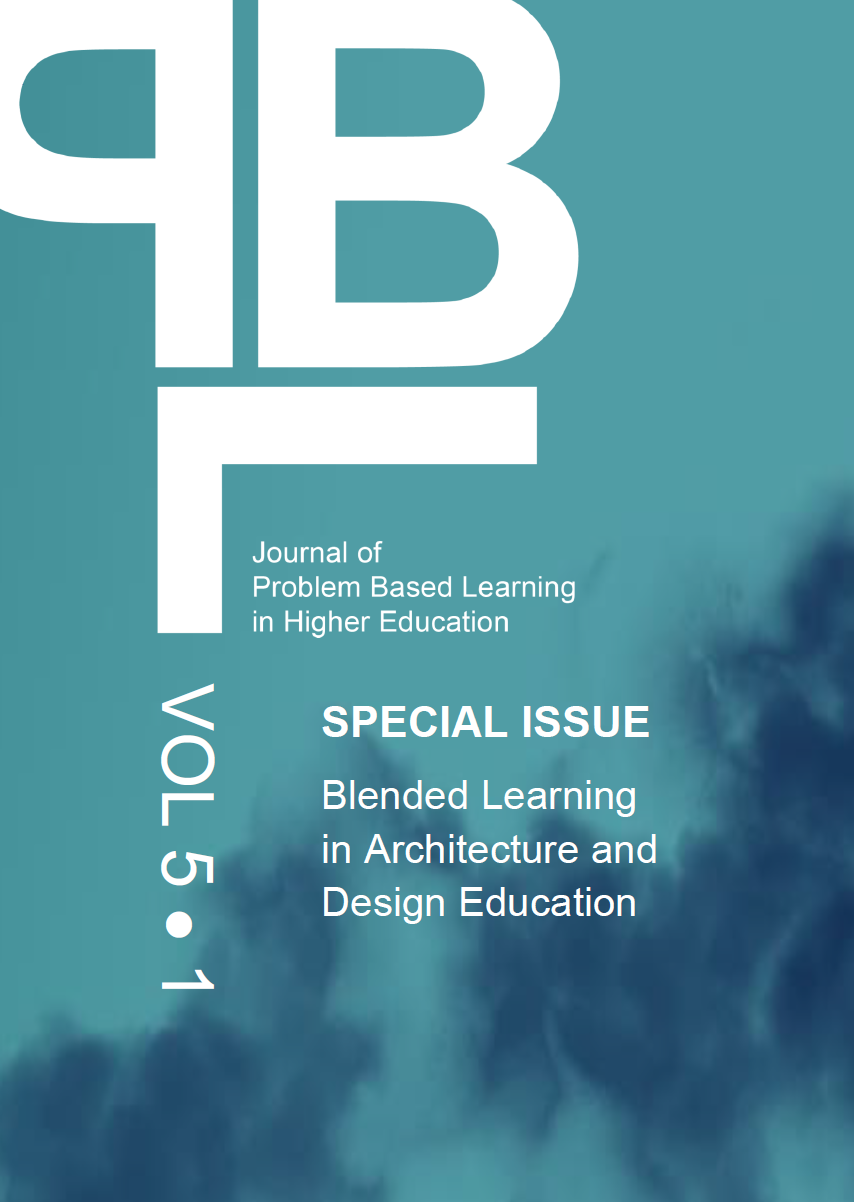Abstract
This paper results from an educational research project that was undertaken by the School of Architecture, at the University of Liverpool funded by the Higher Education Academy in UK. The research explored technology driven shifts in architectural design studio education, identified their cognitive effects on design learning and developed an innovative blended learning approach that was implemented at a masters level digital design studio. The contribution of the research and the proposed approach to the existing knowledge and practice are twofold. Firstly, it offers a new pedagogical framework which integrates social, technical and cognitive dimensions of knowledge construction. And secondly, it offers a unique operational model through the integration of both mediational and instrumental use of digital media. The proposed model provides a useful basis for the effective mobilization of next generation learning technologies which can effectively respond to the learning challenges specific to architectural design knowledge and its means of creation.
References
Behling, M. P., & Klingner, B. G. . (2010). The technological age of teaching. In M. A. F. Susan C. Brown (Ed.), Teaching inclusively in higher education (pp. 155-169). Charlotte, NC: Information Age Publishing.
Bendar, D. M., & Vredevoogd, J.D. (2006). Revitalizing architectural design studio teaching using ICT: Reflections on practical implications. Journal of Educational Technology & Society, 9(4), 114-122.
Blignaut, S., & Trollip, S. (2003). Developing a taxonomy of faculty participation in asynchronous learning environments - an exploratory investigation. Computers & Education, 41(2), 149-172.
British Educational Research Association (2011). Ethical guidelines for educational research.
Brewer, J. D. (2000). Ethnography. Philedelphia: Open University Press.
Cannings, T., & Stager, G. (2003). Online Constructionism and the Future of Teacher Education. In S. McDoughall, Dowling (Ed.), ICT and the Teacher of the Future: Selected papers from the IFIP Working Groups 3.1 and 3.3 Working Conference (Vol. 23). Sydney.
Chen, W., & You, M. (2010). Student response to an Internet-mediated industrial design studio course. International Journal of Technology and Design Education, 20(2), 151-174.
Forman, E. A., & Cazden, C. B. (Ed.) (1985). Exploring Vygotskian perspectives in education. Cambridge: Cambridge University Press.
Garrison, D. R., & Vaughan, N. D. (2008). Blended learning in higher education : framework, principles, and guidelines (1st ed.). San Francisco: Jossey-Bass.
Glaserfeld, E. (1983). Learning as Constructive Activity. Paper presented at the 5th Annual Meeting of the North American Group of Psychology in Mathematics Education, Montreal.
Ham, J., & Schnabel, M. A. (2011). Web 2.0 virtual design studio : social networking as facilitator of design education. Architectural science review, 54(2), 108-116.
Hutchins, E. L., Hollan, J. D., & Norman, D. A. . (1986). Direct Manipulation Interfaces. In D. A. Norman, & Draper, S.W. (Ed.), User Centred system design: New Perspec- tives on human-computer interaction. Hillsdale, NJ.
Iordanova, I., & Tidafi, T. (2007). Multimodal representation of referents for the architectural design studio: some cognitive aspects. International Journal of Design Sciences and Technology, 14(2), 105-118.
Joel, S., Smyth, M., & Rodgers, P. . (2005). An ethnometrhodological approach to the early stages of product design practice. In B. Rodgers, & Hepburn (Ed.), Crossing Design Boundaries. London: Taylor and Francis.
Kipcak, O. (2007). What is VIPA? In C. Marek (Ed.), VIPA virtual campus for virtual space design provided for european architects (pp. 6-9). Graz.
Kolbitsch, J., & Maurer, H. (2006). Transformation of the Web: How Emerging CommunitiesShape the Information we consume. Journal of Universal Computer Science, 12(2), 187-213.
Kvan, T. (2001). The Pedagogy of Virtual Design Studios. Automation in Construction, 10(3), 345-353.
Laiserin, J. (2002). From atelier to e-telier: Virtual design studios. Architectural Record. Retrieved from http://papers.cumincad.org/data/works/att/3a28.content.pdf
Lane, M., Osborne, L., Crowther P. (2015). A blended learning approach to the teaching of professional practice in architecture. Education Sciences, 5(2), 166-178.
Mizban, N. R., A. (2008). A review of experiences of the implementation of e-learning in architectural design education. CEBE Working Paper No. 13.
Osborne, L., Franz, J. M., Savage, S. M., & Crowther, P. (2011). Dichotomy in the design studio : adapting to new blended learning environments. Paper presented at the ICERI2011, Madrid, Spain.
Pea, R. D. (1993). Practices of Distributed Intelligence and designs for education. In G. Salomon (Ed.), Distributed Cognitions, Psychological and Educational Considerations. UK: Cambridge University Press.
Perkins, D. N. (1993). Person-Plus: A Distributed view of thinking and learning. In G. Salomon (Ed.), Distributed Cognitions, Psychological and Educational Considerations, . UK: Cambridge University Press.
Reffat, R. (2007). Revitalizing architectural design studio teaching using ICT: Reflections on practical implications. Int. J. Educ. Dev. Using Inf. Commun. Technol., 3(1), 39–53.
Roberts, A. S. (2013). Peer and self-assessment as a means to improve levels of reflection in students’ journal writing. (CREP-2012-0102).
Saghafi, M. R., Franz, J., Crowther, P. (2012). A holistic blended design studio model: A basis for exploring and expanding learning opportunities. Paper presented at the SITE: Society for Information Technology and Teacher Education, Austin, TX, USA.
Salomon, G. (1993). No distribution without Individuals. In G. Salomon (Ed.), Distributed Cognitions, Psychological and Educational Considerations. UK: Cambridge University Press.
Siemens, G. (2004). Connectivism: A Learning Theory for the Digital Age. Retrieved from http://www.elearnspace.org/Articles/connectivism.htm
Simoff, S. and Maher, M.L. (2000). Analysing participation in collaborative design environments. Design Studies, 21(2), 119-144.
Simon, H. A. (1996). The Sciences of the Artificial: MIT Press.
Spady, W. G. (2001). Beyond counterfeit reforms : forging an authentic future for all learners. Lanham, Md.: Scarecrow Education.
Trentin, G. (2009). Using a wiki to evaluate individual contribution to a collaborative learning project. Journal of Computer Assisted Learning, 25(1), 43-55.
Articles published in Journal of Problem Based Learning in Higher Education are following the license Creative Commons Attribution (CC-BY)
Authors retain copyright and grant the journal right of first publication with the work simultaneously licensed under a Creative Commons Attribution License (CC-BY). Further information about Creative Commons
